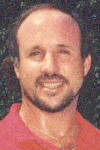


|
QW2002 Paper 3T1 Dr. Mark Blackburn, Mr. Robert Busser & Aaron Nauman Interface-driven Model-based Test Generation of Java Test Drivers |
|
The combination of model-based verification and test automation has helped reduce cost, provide early identification of requirement defects, and improve test coverage [RR00; KSSB01; BBNKK01; BBN01d; Sta00; Sta01]. This paper extends prior work in model-based verification and describes an interface-driven analysis approach that combines requirement modeling to support automated test generation of Java test scripts for executing against a database. The paper describes the concepts of models and test driver mappings using examples for testing security functionality of an Oracle database using Java and standard Structured Query Language (SQL) test drivers. Recommendations are provided for performing the modeling of textual requirements in conjunction with interface analysis to support reuse of models and their associated test driver mappings. These recommendations were derived while extending an early experimental model of one small set of related requirements to several other groups of interrelated requirements. The resulting insights are useful for understanding how to scale models and the associated test driver mappings to an industry-sized verification project. Although the modeling and testing is focused on security capabilities of a database, the results and recommended approaches are general for testing any application.
Dr. Blackburn is a Software Productivity Consortium Fellow, President of T-VEC Technologies, Inc. and co-inventor of the T-VEC system. He has twenty years of software systems engineering experience in development, management and applied research of process, methods and tools. He is currently involved in consulting, strategic planning, proposal and business development, as well as developing and applying methods for model-based approaches to support requirement defect removal and test automation. He has also been involved in applied research and technology demonstrations in requirement and design specification, formal methods, and formal verification, object technology, web-based knowledge engineering, domain engineering, and reverse engineering. He earned a BS in Mathematics from Arizona State, MS in Mathematics from Florida Atlantic University, and a Ph.D. in Information Technology from George Mason University.Mr. Robert D. Busser is co-founder of T-VEC Technologies, Inc. and co-inventor of the T-VEC system. He has over twenty years of software systems engineering experience in development, and management in the area of advanced software engineering, and expertise in software engineering processes, methods and tools. He is the chief architect of the T-VEC system. He has extensive experience in requirement and design methods, real-time systems, model-based development and test generation tools, model analysis, and verification. He has extensive knowledge about model transformation systems, theorem prover and constraint solving systems. In addition, he has extensive avionics engineering experience and has been involved in several FAA certifications. He has experience applying this knowledge in the development of highly-reliable software systems and the development of state of the art requirements-based software modeling and testing technologies. Mr. Busser has a B.S. in Electrical and Electronics Engineering from Ohio University.
Mr. Aaron M. Nauman has a wide range of systems and applications development experience in both real-time (telecommunications) and information systems domains. He is currently involved in the development of model transformation, and software verification through specification-based automated testing. His experience includes all aspects of product development from requirements analysis through test implementation. Additionally, he has experience in object-oriented technologies, distributed and client/server systems, web-based and components-based software and systems integration. He is a representative on the OMG UML Action Semantics working group. Mr. Nauman graduated Summa Cum Laude from North Carolina State University with a B.S. in Computer Science.
Dr. Ramaswamy Chandramouli is a computer scientist at NIST with over 15 years of experience in both Private Sector and Federal Agencies. His professional interests include Distributed System Security, Access Control Models and Security Specifications. He was one of the authors of “Role Based Access Control Protection Profile” which was the first Common Criteria (V 2.0) Protection Profile to be certified in the U.K. He was also the lead author of the paper titled “Comparison of Role Based Access Control Features in commercial DBMS” which won the Best Professional Paper award at the the 21st National Information Systems Security Conference held at Crystal City, VA, Oct 1998. Dr.Chandramouli holds an MS degree in Operations Research from the University of Texas and a Ph.D. in Information Technology from George Mason University.